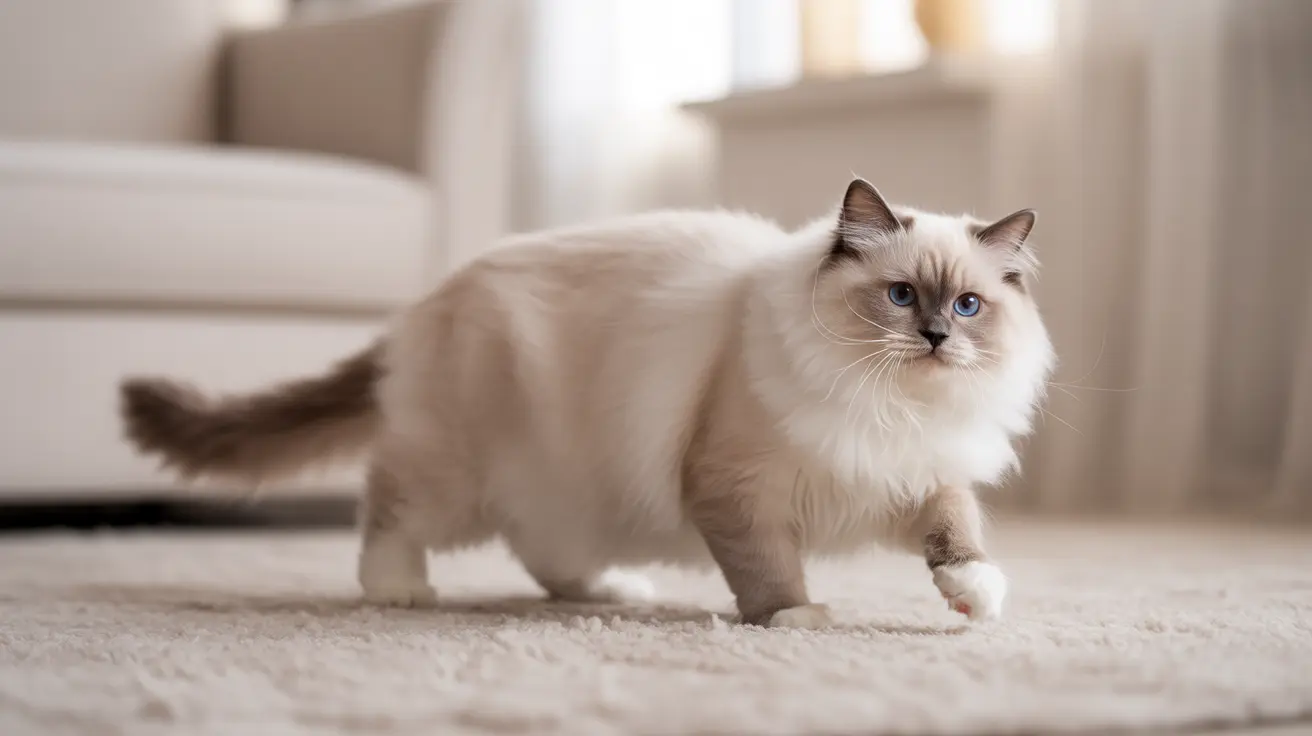Every cat owner should be aware of their pet's anal gland health, as problems with these small but important organs can cause significant discomfort and lead to serious complications if left untreated. While most cats naturally express their anal glands during normal bowel movements, some may require additional help. Understanding the signs and symptoms of anal gland issues is crucial for maintaining your cat's health and comfort.
In this comprehensive guide, we'll explore the clear indicators that your cat might need their anal glands expressed, along with essential information about prevention, treatment, and when to seek veterinary care.
Common Signs Your Cat Needs Anal Gland Expression
Behavioral Changes and Physical Symptoms
Watch for these telltale signs that may indicate your cat is experiencing anal gland problems:
- Scooting or dragging their bottom across the floor
- Excessive licking or biting around the anal area
- Visible discomfort while defecating
- Unusual aggression when the base of the tail is touched
- Strong, fishy odor coming from your cat's rear end
Changes in Bathroom Habits
Pay attention to these litter box-related indicators:
- Defecating outside the litter box
- Straining during bowel movements
- Visible signs of constipation or diarrhea
- Small, hard stools that may indicate dehydration
Understanding Anal Gland Function
Cat anal glands, also called anal sacs, are two small pouches located on either side of the anus. These glands produce a strong-smelling secretion that cats naturally release during defecation, marking their territory and communicating with other cats.
When these glands become impacted or infected, they can cause significant discomfort and require professional attention.
Risk Factors for Anal Gland Problems
Physical Conditions
Several factors can increase the likelihood of anal gland issues:
- Obesity
- Poor muscle tone
- Chronic soft stools or diarrhea
- Anatomical abnormalities
- Age-related changes
Dietary Influences
Diet plays a crucial role in anal gland health:
- Low-fiber diets
- Food allergies or sensitivities
- Inadequate hydration
- Poor quality pet food
When to Seek Veterinary Care
Contact your veterinarian immediately if you notice:
- Blood or pus near the anal area
- Visible swelling or lumps around the anus
- Signs of pain or extreme discomfort
- Persistent scooting or excessive grooming
- Strong, persistent odor that doesn't resolve
Frequently Asked Questions
What are the clear signs that my cat's anal glands need to be expressed?
The most obvious signs include scooting on the floor, excessive licking of the anal area, a strong fishy odor, and visible discomfort during defecation. You may also notice your cat becoming irritable when the base of their tail is touched.
How can I safely express my cat's anal glands at home, and when should I consult a vet?
While it's possible to express anal glands at home, it's strongly recommended to have this procedure performed by a veterinary professional. Improper technique can cause injury or infection. Always consult your vet first, who can demonstrate proper technique if home care is appropriate.
What causes anal gland problems in cats, and how can I prevent them?
Common causes include obesity, poor diet, chronic diarrhea or constipation, and anatomical abnormalities. Prevention includes maintaining a healthy weight, feeding a high-quality diet with appropriate fiber content, and ensuring proper hydration.
Why does my cat scoot or lick its rear excessively—could it be an anal gland issue?
Yes, scooting and excessive licking are primary indicators of anal gland problems. These behaviors suggest discomfort or irritation in the anal area and should be evaluated by a veterinarian, especially if persistent.
What are the risks of leaving feline anal gland problems untreated?
Untreated anal gland issues can lead to serious complications including infection, abscess formation, gland rupture, and chronic pain. In severe cases, surgical intervention may be necessary. Early detection and treatment are essential for preventing these complications.
Conclusion
Being attentive to your cat's behavior and physical symptoms is key to identifying anal gland problems early. While most cats manage their anal glands naturally, knowing when to seek professional help can prevent discomfort and serious health complications. If you notice any concerning signs, don't hesitate to consult your veterinarian for proper diagnosis and treatment.






